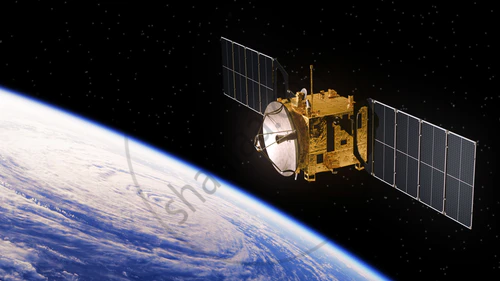Topics
Units and Measurements
- Introduction of Units and Measurements
- System of Units
- Measurement of Length
- Measurement of Mass
- Measurement of Time
- Dimensions and Dimensional Analysis
- Accuracy, Precision and Uncertainty in Measurement
- Errors in Measurements
- Significant Figures
Mathematical Methods
- Vector Analysis
- Vector Operations
- Resolution of Vectors
- Multiplication of Vectors
- Introduction to Calculus
Motion in a Plane
- Introduction to Motion in a Plane
- Rectilinear Motion
- Motion in Two Dimensions-Motion in a Plane
- Uniform Circular Motion (UCM)
Laws of Motion
- Introduction to Laws of Motion
- Aristotle’s Fallacy
- Newton’s Laws of Motion
- Inertial and Non-inertial Frames of Reference
- Types of Forces
- Work Energy Theorem
- Principle of Conservation of Linear Momentum
- Collisions
- Impulse of Force
- Rotational Analogue of a Force - Moment of a Force Or Torque
- Couple and Its Torque
- Mechanical Equilibrium
- Centre of Mass
- Centre of Gravity
Gravitation
- Introduction to Gravitation
- Kepler’s Laws
- Newton’s Universal Law of Gravitation
- Measurement of the Gravitational Constant (G)
- Acceleration Due to Gravity (Earth’s Gravitational Acceleration)
- Variation in the Acceleration Due to Gravity with Altitude, Depth, Latitude and Shape
- Gravitational Potential and Potential Energy
- Earth Satellites
Mechanical Properties of Solids
- Introduction to Mechanical Properties of Solids
- Elastic Behavior of Solids
- Stress and Strain
- Hooke’s Law
- Elastic Modulus
- Stress-strain Curve
- Strain Energy
- Hardness
- Friction in Solids
Thermal Properties of Matter
- Introduction to Thermal Properties of Matter
- Heat and Temperature
- Measurement of Temperature
- Absolute Temperature and Ideal Gas Equation
- Thermal Expansion
- Specific Heat Capacity
- Calorimetry
- Change of State
- Heat Transfer
- Newton’s Law of Cooling
Sound
- Introduction to Sound
- Types of Waves
- Common Properties of All Waves
- Transverse Waves and Longitudinal Waves
- Mathematical Expression of a Wave
- The Speed of Travelling Waves
- Principle of Superposition of Waves
- Echo, Reverberation and Acoustics
- Qualities of Sound
- Doppler Effect
Optics
- Introduction to Ray Optics
- Nature of Light
- Ray Optics Or Geometrical Optics
- Reflection
- Refraction
- Total Internal Reflection
- Refraction at a Spherical Surface and Lenses
- Dispersion of Light Through Prism and Formation of Spectrum
- Some Natural Phenomena Due to Sunlight
- Defects of Lenses (Aberrations of Optical Images)
- Optical Instruments
- Optical Instruments: Simple Microscope
- Optical Instruments: Compound Microscope
- Optical Instruments: Telescope
Electrostatics
- Introduction to Electrostatics
- Electric Charges
- Basic Properties of Electric Charge
- Coulomb’s Law - Force Between Two Point Charges
- Principle of Superposition
- Electric Field
- Electric Flux
- Gauss’s Law
- Electric Dipole
- Continuous Distribution of Charges
Electric Current Through Conductors
- Electric Current
- Flow of Current Through a Conductor
- Drift Speed
- Ohm's Law (V = IR)
- Limitations of Ohm’s Law
- Electrical Power
- Resistors
- Specific Resistance (Resistivity)
- Variation of Resistance with Temperature
- Electromotive Force (emf)
- Combination of Cells in Series and in Parallel
- Types of Cells
- Combination of Resistors - Series and Parallel
Magnetism
- Introduction to Magnetism
- Magnetic Lines of Force and Magnetic Field
- The Bar Magnet
- Gauss' Law of Magnetism
- The Earth’s Magnetism
Electromagnetic Waves and Communication System
- EM Wave
- Electromagnetic Spectrum
- Propagation of EM Waves
- Introduction to Communication System
- Modulation
Semiconductors
- Introduction to Semiconductors
- Electrical Conduction in Solids
- Band Theory of Solids
- Intrinsic Semiconductor
- Extrinsic Semiconductor
- p-n Junction
- A p-n Junction Diode
- Basics of Semiconductor Devices
- Applications of Semiconductors and P-n Junction Diode
- Thermistor
- Projection of Satellite
- Weightlessness in a Satellite
- Time Period of a Satellite
- Binding Energy of an orbiting satellite
Notes
Earth Satellites:
-
Any object revolving around the earth.

Natural Satellite
-
Satellite created by nature.
-
Example: - Moon is the only natural satellite of the earth.
Artificial Satellites:
-
Humans built objects orbiting the earth for practical uses. There are several purposes which these satellites serve.
Example:- Practical Uses of Artificial satellites are
-
Communication
-
Television broadcasts
-
Weather observation
-
Military support
-
Navigation
-
Scientific research
Determining the Time period of Earth Satellite:-
Time taken by the satellite to complete one rotation around the earth is known as the time period of the satellite.
As satellites move in circular orbits there will be a centripetal force acting on it.
`"F"_c = "mv"^2/("R"_e + h)` it is towards the centre.
where,
h = distance of the satellite from the earth
`"F"_c` = centripetal force.
`"F"_G = ("GM"_e"m")/("R"_e + "h")^2`
where,
`"F"_g` = Gravitational force
m = mass of the satellite.
`"M"_e` = mass of the earth
`"F"_c = "F"_G`
`"mv"^2/("R"_e + "h")=("GM"_e"m")/("R"_e + "h")^2`
`"v"^2 = "GM"_e/("R"_e + "h")`
`"v" = sqrt("GM"_e/("R"_e +"h"))` ...(1)
This is the velocity with which satellite revolves around the earth.
The satellite covers distance = `2pi("R"_e +"h")` with velocity v.
`"T"=(2pi("R"_e + "h"))/"v"`
`(2pi("R"_e+"h"))/((sqrt"GM"_e)/("R"_e+"h"))` ...from(1)
`"T"=2pi("R"_e+h)^(3/2)/sqrt"GM"_e`
Special case:-
h << `"R"_e` (satellite is very near to the surface of the earth)
Then `"T"=2pisqrt("R"_e^3/"GM"_e)`
After calculating
`"T" = 2pisqrt("R"_e/"g")`
